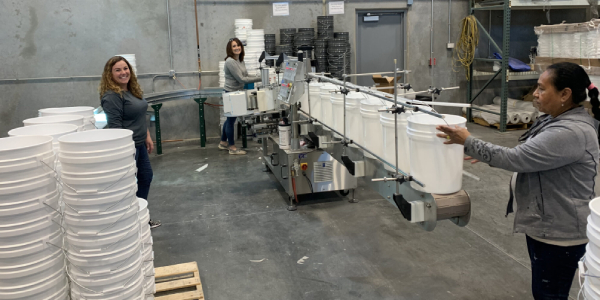Managing risk through pre-operational planning – Part two

By Cotney Consulting Group.
Understand who should be involved in preplanning and how to preplan.
In part one of this series, we reviewed some of the most important reasons and benefits of why you need to preplan to reduce risks. Part two of this series will discuss who should be involved in preplanning and how to preplan.
Who should be involved in preplanning?
Various professionals involved in different disciplines in your roofing business — estimating, purchasing, cost control and field operations — need to be involved in this process at certain times.
The estimator - This individual is typically the first in your company to review the job. They must evaluate the job risks and budget for them.
The safety director/safety coordinator - The safety director brings familiarity with safety standards and local regulations. This professional should be consulted at the bid stage to help evaluate risks the estimator may not have identified or fully appreciated. They can also provide input on how to most effectively and cost-efficiently implement the necessary controls.
Project manager/job superintendent - This individual provides scheduling and roof installation layout input and may select required equipment. They may also help select subcontractors. These inputs should be evaluated for any unique risks they may pose to operations in the field.
Other management - The project may have special requirements imposed by the owner that may differ from your company's rules and organizational structure. Any special conditions should be reviewed and addressed at this time.
Insurer/broker loss control representative - Your broker/insurer may have a wealth of in-house information and expertise that you can draw on. This is a resource available to roofing contractors in preplanning their operations. You should assess the capabilities of your broker or insurer in assisting in this area.
How to preplan
There are four phases to the preplanning process: fact finding, analysis and evaluation, the preplanning meeting and follow through.
1 - Fact finding
Information can be obtained from project plans and specifications, the contract and the owner's requirements. Other sources include the means and methods the company or the subcontractors are planning to use and operational, logistic and tactical plans. Considerations should also be made for the site and surrounding conditions, including local ordinances, traffic patterns, public usage and other neighborhood realities.
2 - Analysis and evaluation
The potential for worker injuries, including the contractor's and subcontractor's workers, must be evaluated and analyzed. Other considerations include potential public harm and property damage both in and around the job site.
3 - Preplanning meeting
Preparation is vital to an effective and efficient meeting. Everyone must do their homework and come prepared for the meeting. At the meeting's conclusion, you must agree on the identified risks and the controls to be implemented. The result of this meeting will be an action plan to control risks, hazards and exposures.
4 - Follow through
For any plan to work, there must be a follow-through by conducting inspections to ensure that controls are implemented and sufficiently address existing conditions. If changes occur, modifications are made to meet the changed conditions.
What do you preplan for?
You plan for everything with unacceptable risks to your company. Through the planning process, you identify these risks, eliminate them or try to reduce the adverse effect to the lowest possible level. A general checklist should be created to assist in addressing all possible areas involving risk.
If conducted properly, the preplanning process is a continuous improvement process. It begins with the identification of areas of risk through the collection of data. The risks are then analyzed. Solutions are identified that will address the risks. These solutions are then evaluated for effectiveness and their compatibility with project needs. Select the best solution and then implement it. Conduct audits to ensure that the implemented solution is effective and working. If it is, the process is taken to the next risk element; if not, it is reevaluated, and the cycle starts again.
Summation
Preplanning is the review of your proposed project operations before and during a roofing project to reduce risks that will minimize disruption, increase efficiency and lower costs by identifying and eliminating potential loss sources. Effective preplanning ensures a safer working environment, greater operational efficiency and overall project success. It is an integral part of ensuring the safety and success of any construction project, particularly in the roofing industry.
Learn more about Cotney Consulting Group in their Coffee Shop Directory or visit www.cotneyconsulting.com.






















Comments
Leave a Reply
Have an account? Login to leave a comment!
Sign In